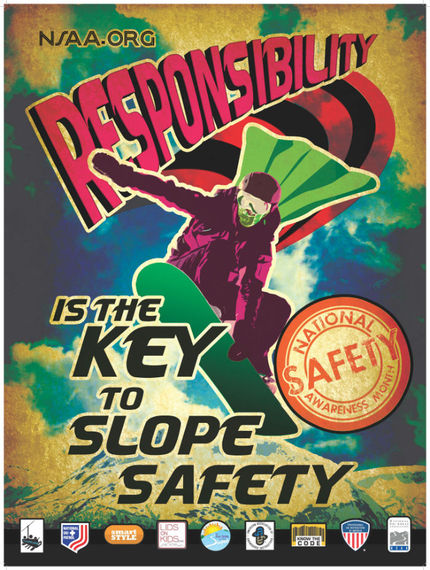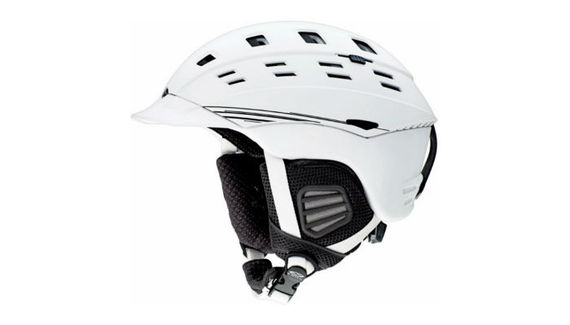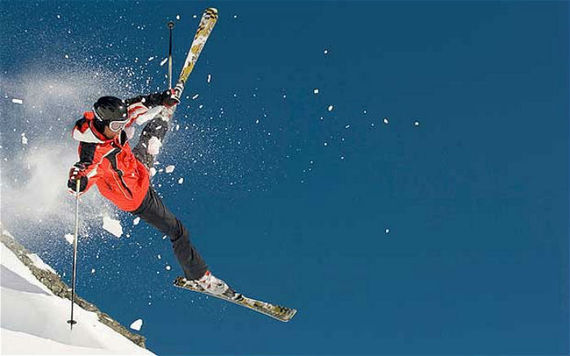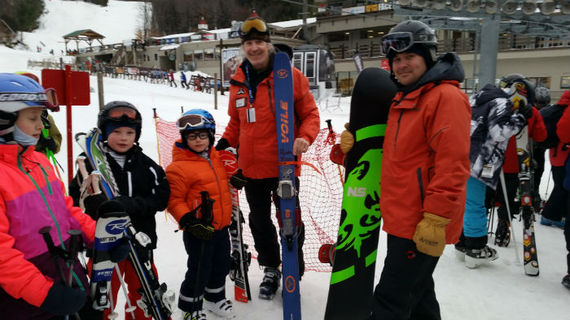Why do we love to snowboard and ski? That's a silly question with an easy answer: because it's fun.
A significant contributor to the fun of downhill snowsports is the sensation of sliding down the hill, in control but at speeds that are higher than we humans would normally be able to achieve without sticks made of wood, fiberglass, metal, and plastic. This flying feeling, obviously, comes with an element of risk, something we all need to be conscious of and manage appropriately while on the slopes.
January was National Safety Month at ski areas across the United States, sponsored by the National Ski Areas Association (NSAA). Over 50 years ago, NSAA developed the Responsibility Code, a basic set of 7 key tenets for skiing safety. It focuses on personal responsibility for snowsports participants. However, safety on the mountain goes beyond the basics of the Responsibility Code. There are as many aspects to safety while skiing and snowboarding as there are types of snow. Here are a few ways to be safe on the slopes this winter.
1. Wear a Helmet
Helmet usage has exploded among skiers and snowboarders in the last decade. According to NSAA, 73% of all snowsports participants wear a helmet, up from 28% ten years ago. Helmets won't protect you in all circumstances, of course, but wearing one is certainly a good idea. Lots of research has been done about the efficacy of helmets, including the website LidsOnKids.Org that encourages parents and kids to wear head protection.
Ski areas have been encouraging their customers to wear helmets for years. Some ski areas, like Whiteface Mountain in New York, provide free helmets for all people renting equipment. At Belleayre, all instructors wear helmets while teaching "to help promote awareness and encourage helmet use among our guests," commented Liz Mezzetti, Marketing Director for the New York Olympic Regional Development Authority (which manages Whiteface, Belleayre, and Gore Mountain).
2. Consider the Conditions
Experienced downhill sliders know that the conditions on their favorite trail can vary from blower powder to groomed corduroy to boilerplate linoleum. Sometimes, though, we forget how quickly the conditions can change - even on the same day. Always be aware of the snow surface conditions and alter your skiing and snowboarding accordingly.
"Adjust for snow conditions, controlling your speed for different situations," says Mezzetti in regards to monitoring the snow surface. Use various cues to monitor the snow surface, including your eyes, ears, and feet. Continuously monitor this feedback to keep yourself in the proper athletic stance, which increases your ability to anticipate and react to changing snow surface conditions.
3. Watch for Others
On a mountain tour at Killington Resort a few years ago, I listened to one of their mountain hosts describe skiing on a trail like driving - you have to be aware of your surroundings; don't stop in the middle of the road (trail); before re-entering the road (trail), be sure to look and yield to others; and watch out for other drivers (skiers). I still use that analogy today when describing how to be safe on the hill. And just like driving, I'm always more worried about "the other guy" than I am about myself.
"We stress to our guests to give each other plenty of room on the slopes and control their speed," notes Jon Gauld, risk manager at Arizona Snowbowl. "Collisions are probably one of the scariest things that can happen to a guest."
Collisions on the snow can have a serious impact on you and someone else, potentially for the rest of your life. Most ski states have state statues that make careless skiing or snowboarding a potentially criminal offense. So take it easy and slow down, especially if the trails are crowded.
Behind the Scenes
You might not know it, but ski area managers and employees are always thinking about safety, both for their employees and for their guests. Arizona Snowbowl has a variety of "Safety Camps" during Safety Month, including educational games and contests for guests. Last season, the ski area gave out 100 free lift tickets to those who could cite the Responsibility Code from memory. This winter, they are designing a safety sign campaign for their lift towers that is reminiscent of the Burma Shave roadside signs from the 1950s.
At Whiteface, the Host Patrol team monitors the mountain looking for potentially dangerous situations and generally helping visitors enjoy their day. The orange jacket-clad clan of skiers and snowboarders looks for and removes rocks, branches, or other obstructions on the trails. They also "position themselves around the mountain to remind skiers and riders to stay in control and slow down," says Mezzetti.
These are only a couple of ideas about how to keep yourself safe on the mountain this season. Winter snowsports safety also includes a wide range of additional topics and considerations, including avalanche awareness, being sun smart, avoiding tree wells, ACL awareness, keeping your equipment tuned and in good working order, and many other matters. Make ski safety part of your normal routine and be safe out on the hill!
By Dave Belin / @Rrcdave




